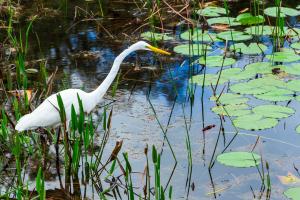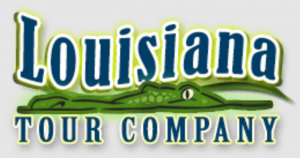The Hidden Ecosystem: Swamp Plants, Animals & Their Roles
Every part of the swamp, from its largest predator to its smallest insect, contributes to keeping the system in balance. ”
MARRERO, LA, UNITED STATES, September 30, 2025 /EINPresswire.com/ -- Swamps represent one of the most complex and interconnected ecosystems in North America. These wetlands are not simply stretches of water and vegetation; they are dynamic habitats where plants and animals perform essential roles that support both the environment and surrounding communities. Understanding these hidden systems sheds light on why swamps remain vital to the health of the broader region.— Milton Walker Jr.
At the heart of the swamp are its plants. Cypress and tupelo trees dominate many Louisiana wetlands, their root systems stabilizing the soil and providing shelter for countless species. Beneath the surface, aquatic plants oxygenate the water, filter impurities, and create food sources for fish and invertebrates. Even the dense mats of floating vegetation, often dismissed as overgrowth, serve as nurseries for young fish and amphibians.
Animal life adds another layer to this balance. Alligators, for example, are apex predators that regulate populations of fish, turtles, and smaller mammals. By doing so, they prevent any single species from overwhelming the system. Birds, ranging from herons to egrets, feed on insects and small aquatic animals, contributing to pest control while spreading seeds between different parts of the wetland. Insects themselves, often overlooked, play critical roles in pollination and decomposition.
According to Milton Walker Jr., owner of Louisiana Tour Company in New Orleans, Louisiana, “Every part of the swamp, from its largest predator to its smallest insect, contributes to keeping the system in balance. Without that balance, the swamp could not continue to thrive.”
The relationship between plants and animals is evident in the way they sustain one another. Fallen leaves and organic matter break down in the water, feeding microorganisms that, in turn, become food for fish and invertebrates. These fish sustain wading birds and reptiles, which in turn shape the populations of their prey. The cycle continues without pause, forming a chain that supports every level of the ecosystem.
Swamps also provide natural flood protection. Plant roots absorb excess water during storms, reducing the impact on nearby communities. Animals contribute indirectly by maintaining plant populations through seed dispersal and grazing. Even beavers, often considered nuisances, help create natural dams that slow water movement and create diverse habitats.
The hidden ecosystem extends below the waterline as well. Nutrients cycle constantly, with plants and animals working together to recycle organic matter. This process creates fertile conditions that allow wetlands to act as nurseries for countless species of fish and shellfish that eventually populate coastal waters. The seafood industry, a cornerstone of Louisiana’s economy, relies heavily on the productivity of these swamps and marshes.
Swamps are also significant for migratory birds. Each year, thousands of birds travel through Louisiana’s wetlands, relying on the rich food sources and sheltered environments to rest and refuel. The presence of these birds not only benefits the ecosystem but also connects the swamps to larger continental migration patterns.
Amphibians such as frogs and salamanders provide another key role by serving as bioindicators. Because they are sensitive to changes in water quality and habitat conditions, their presence—or absence—offers clues about the health of the ecosystem. Monitoring amphibian populations helps scientists understand how environmental pressures, such as pollution or climate change, are affecting wetlands.
The role of insects, often dismissed as pests, deserves equal attention. Mosquitoes, dragonflies, and beetles each play their part. While mosquitoes serve as food for birds, bats, and fish, dragonflies help control mosquito populations. Beetles and other decomposers recycle dead plant and animal matter, keeping the system clean and balanced.
Swamps are not static environments; they are constantly adapting. Seasonal flooding reshapes plant and animal activity, while droughts force species to adjust behaviors for survival. This resilience is a defining trait of wetlands, allowing them to recover from natural disruptions and continue functioning as critical habitats.
Human communities also benefit directly. Beyond storm protection and seafood production, swamps filter water naturally, trapping sediments and pollutants before they reach rivers or the Gulf of Mexico. This filtration helps maintain cleaner waterways for agriculture, fishing, and recreation.
The hidden ecosystem of swamp plants and animals demonstrates the importance of balance and interdependence. No species operates in isolation. Each has a role—whether regulating populations, dispersing seeds, recycling nutrients, or shaping the environment. Together, they form a system that protects coastlines, supports economies, and sustains life on multiple levels.
As Milton Walker Jr. notes, swamps are more than scenic landscapes. They are living systems where every tree, insect, and animal has a purpose. Protecting these environments ensures that both nature and local communities continue to benefit from the stability they provide.
Morgan Thomas
Rhino Digital, LLC
+1 504-875-5036
email us here
Visit us on social media:
Facebook
Legal Disclaimer:
EIN Presswire provides this news content "as is" without warranty of any kind. We do not accept any responsibility or liability for the accuracy, content, images, videos, licenses, completeness, legality, or reliability of the information contained in this article. If you have any complaints or copyright issues related to this article, kindly contact the author above.


